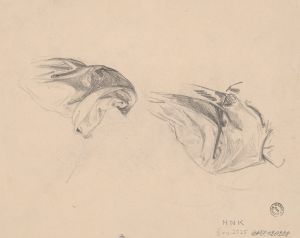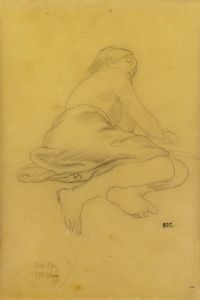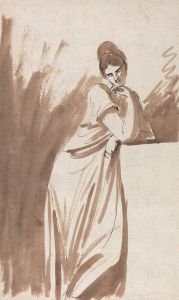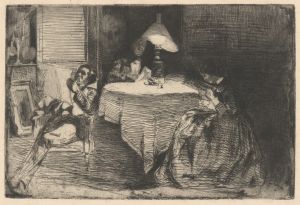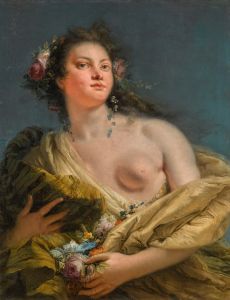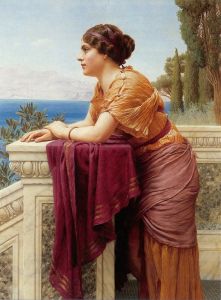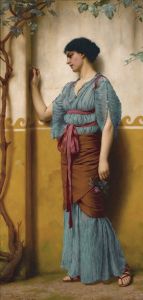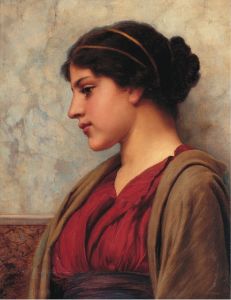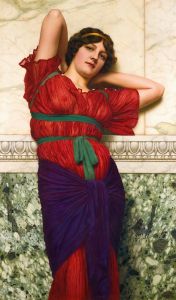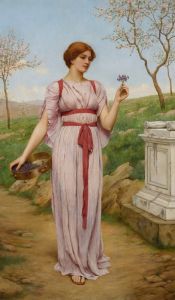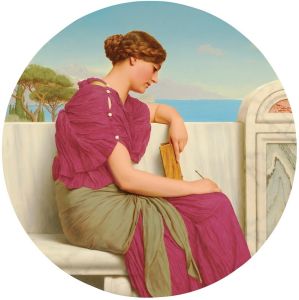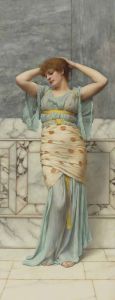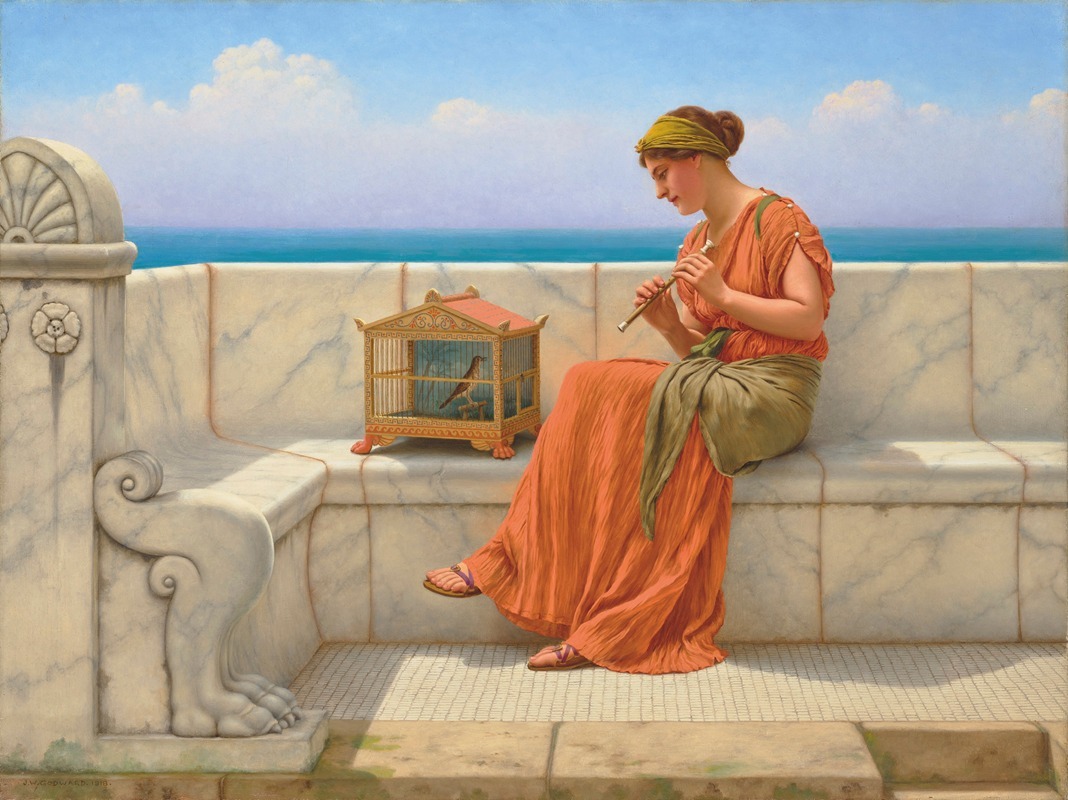
Songs without Words
A hand-painted replica of John William Godward’s masterpiece Songs without Words, meticulously crafted by professional artists to capture the true essence of the original. Each piece is created with museum-quality canvas and rare mineral pigments, carefully painted by experienced artists with delicate brushstrokes and rich, layered colors to perfectly recreate the texture of the original artwork. Unlike machine-printed reproductions, this hand-painted version brings the painting to life, infused with the artist’s emotions and skill in every stroke. Whether for personal collection or home decoration, it instantly elevates the artistic atmosphere of any space.
John William Godward was a prominent English painter associated with the Neoclassical movement, known for his meticulous attention to detail and his depictions of women in classical settings. One of his notable works is "Songs without Words," which exemplifies his artistic style and thematic preferences.
"Songs without Words" is a painting that reflects Godward's fascination with the classical world, a common theme in his oeuvre. The title of the painting suggests a connection to music, specifically the idea of conveying emotion and narrative without the use of lyrics, much like the compositions of Felix Mendelssohn, who wrote a series of piano pieces under the same name. This connection to music is indicative of Godward's interest in evoking mood and atmosphere through visual means.
In "Songs without Words," Godward portrays a solitary female figure, a common subject in his work. The woman is depicted in a serene, contemplative pose, surrounded by elements that suggest a classical setting. Godward's attention to detail is evident in the intricate rendering of the woman's attire, which is typical of ancient Roman or Greek fashion. The use of drapery and the careful depiction of textures are hallmarks of Godward's style, showcasing his skill in creating lifelike representations.
The background of the painting often includes architectural elements that further emphasize the classical theme. Godward was known for his ability to create a sense of timelessness in his work, transporting viewers to an idealized version of antiquity. The use of marble, columns, and lush landscapes are common features in his paintings, providing a backdrop that complements the central figure.
Godward's palette in "Songs without Words" is typically soft and harmonious, with a focus on pastel tones that enhance the tranquil mood of the scene. The interplay of light and shadow is carefully managed to highlight the figure and create a sense of depth, drawing the viewer's eye to the central elements of the composition.
The painting reflects Godward's broader artistic philosophy, which was heavily influenced by the Aesthetic Movement and the works of artists like Sir Lawrence Alma-Tadema and Frederic Leighton. Godward's commitment to beauty and form, as well as his rejection of modernism and its departure from classical ideals, is evident in this work.
"Songs without Words" is a testament to Godward's technical proficiency and his dedication to the classical tradition. His work, including this painting, is often characterized by a sense of escapism, offering viewers a glimpse into an idealized past that is both beautiful and serene. Despite the challenges he faced during his career, particularly with the rise of modern art movements that overshadowed his style, Godward's paintings have continued to be appreciated for their beauty and craftsmanship.
Today, "Songs without Words" remains an important part of Godward's legacy, illustrating his unique ability to blend classical themes with a personal touch that resonates with audiences. His work continues to be studied and admired for its contribution to the Neoclassical movement and its enduring appeal.





